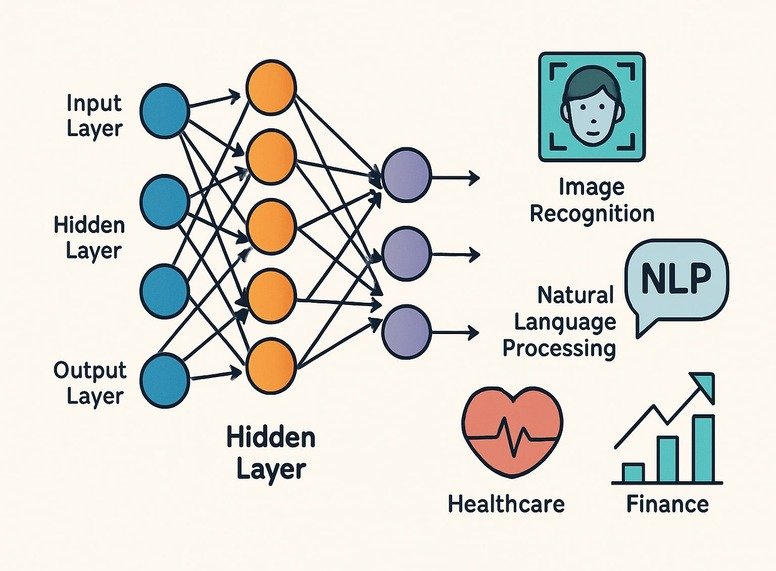Neural networks are at the heart of modern artificial intelligence (AI). Modeled after the human brain, they allow computers to process and analyze vast amounts of data efficiently. In this article, you will learn neural networks, their working process, types, and how they are applied across various industries.
What Are Neural Networks?
To begin with, think of neural networks as a simplified model of the human brain. A neural network consists of layers of interconnected nodes, often called “neurons.” These nodes actively process information and learn to recognize patterns. Over time, by analyzing large datasets, neural networks become increasingly accurate and efficient.
In order to learn neural networks effectively, it is important to understand how these artificial neurons interact. Each connection between nodes carries a weight, which influences the strength of the connection. As the network trains, it continuously adjusts these weights to enhance its accuracy.
How Neural Networks Work
Neural networks function through a structured flow of data across three key layers:
- Input Layer: This layer receives raw data.
- Hidden Layers: These layers perform computations, transforming and weighting the input data.
- Output Layer: This layer generates the final result or prediction.
Backpropagation: The Core Learning Mechanism
One of the essential processes in learning neural networks is backpropagation. After making a prediction, the network compares its output with the actual result. If there is an error, the network sends this feedback backward through the layers, adjusting the weights accordingly. This iterative process ensures the network improves with each cycle until it reaches optimal performance.
Types of Neural Networks You Should Know
1. Feed-Forward Neural Networks (FNNs)
Feed-forward neural networks are the simplest form. Data flows in one direction—from input to output—without looping back. Due to their straightforward architecture, they are often used in image and speech recognition tasks.
2. Recurrent Neural Networks (RNNs)
Unlike FNNs, RNNs are designed for sequential data. They have loops that allow them to retain information from previous inputs. Consequently, RNNs are ideal for applications such as language translation, speech recognition, and time-series analysis.
3. Convolutional Neural Networks (CNNs)
CNNs excel in processing grid-like data structures, especially images. By using convolutional layers, they detect patterns like edges and textures. For this reason, CNNs are widely adopted in computer vision tasks like image and video recognition.
4. Generative Adversarial Networks (GANs)
GANs are composed of two competing neural networks: a generator and a discriminator. While the generator creates data, the discriminator evaluates its authenticity. Through this competition, GANs become capable of producing highly realistic images, videos, and even audio content.
Real-World Applications of Neural Networks
Neural networks are transforming industries by enabling smarter, faster, and more efficient solutions. Here are some of their key applications:
Image Recognition
Neural networks play a critical role in image recognition. From facial recognition systems in smartphones to autonomous vehicles detecting road signs, their impact is evident everywhere.
Healthcare Innovations
Neural networks are revolutionizing healthcare. They assist doctors in diagnosing diseases, analyzing medical images, and creating personalized treatment plans. Consequently, patients receive more accurate and timely care.
Financial Services
In the financial sector, neural networks analyze large volumes of data to predict stock prices, detect fraudulent activities, and automate trading strategies. As a result, they enhance both accuracy and efficiency in decision-making processes.
Conclusion: Why You Should Learn Neural Networks
To sum up, neural networks are a fundamental part of AI technology. Their ability to learn from data and adapt to new information makes them indispensable in various industries. By choosing to learn neural networks, you equip yourself with essential skills that are highly valuable in today’s technology-driven world.
As AI continues to evolve, understanding how neural networks work will give you a competitive edge. Therefore, start learning today and stay ahead in the rapidly growing field of artificial intelligence.








